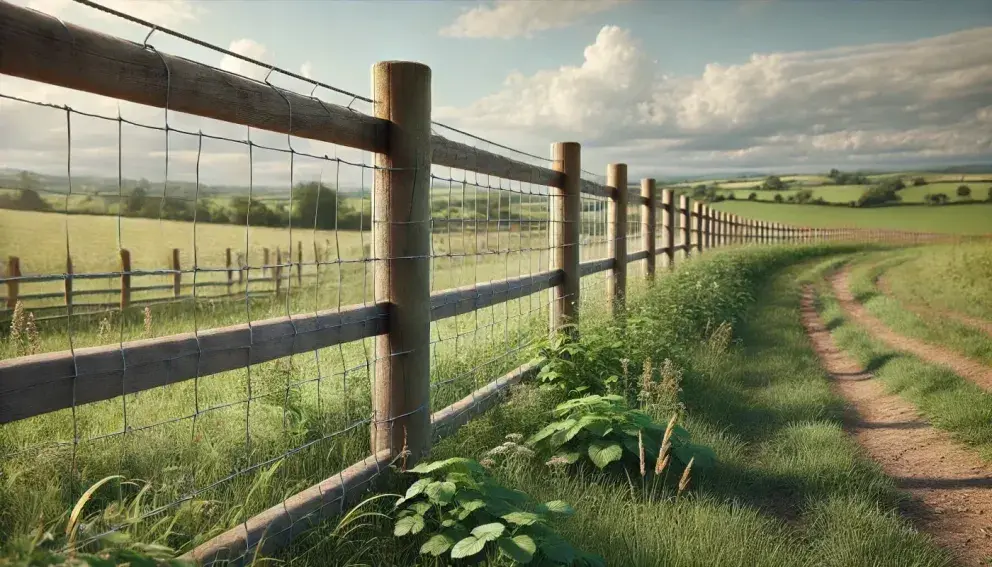Installing agricultural fencing correctly the first time can save both time and money, preventing future headaches. Whether you’re aiming to contain livestock or keep unwanted animals at bay, following these best practices can make a significant difference. Here are 11 essential tips for constructing a durable agricultural fence.
Over-engineering your agricultural fencing can lead to unnecessary costs. For example, if your aim is to prevent animals from entering rather than confining them, a fence with larger mesh might suffice. Carefully evaluate your needs to choose the appropriate fencing specification without overspending.
The depth of your straining posts is vital for sturdy agricultural fencing. Aim to dig or drive them at least 0.9 metres deep into the ground. Shallow posts won’t provide adequate tension, leading to sagging and a less effective barrier.
Achieving the correct tension is critical for a fence that will last. For even tension across your fence line, consider using a straining clamp. This tool ensures that you apply uniform pressure when tightening the wire, resulting in a well-tensioned fence that won’t sag or weaken over time and can withstand impacts while maintaining the wire’s flexibility, which is crucial for its durability.
When fastening your fence to the posts, opt for barbed staples instead of smooth ones. The barbs grip the wood more securely, reducing the likelihood of the staples being pulled out over time—especially in areas where livestock may exert pressure on the fence.
High-tensile fencing is an excellent choice for agricultural use. It can be pulled much tighter than mild steel, which means it’s less prone to sagging and can better withstand impacts from animals. Moreover, posts can be spaced further apart when using high-tensile wire, making it a cost-effective option in the long run.
To save time and enhance the strength of your agricultural fencing, use longer rolls of wire. Handling these longer rolls can be more challenging, but they reduce the number of joins you need to make. Fewer joins mean fewer weak spots, resulting in a stronger, more durable fence.
When attaching the fence to the posts, avoid driving the staples too tightly against the wire. Tight staples can damage the galvanised coating on the wire, leading to corrosion and a shorter lifespan for your fence. Leave a small gap to preserve the wire’s protective coating while still securing it firmly.
Cattle can exert significant downward force on a fence, especially when they lean or rub against it. To reinforce your agricultural fencing, add two strands of high-tensile barbed wire or a single electrified wire above the main fence. This discourages cattle from pushing down on the fence, helping to extend its lifespan.
By following these best practices, you can build a reliable, long-lasting agricultural fencing that meets your needs. Whether you’re an experienced contractor or a first timer, these tips will help you achieve a strong and effective fence.
